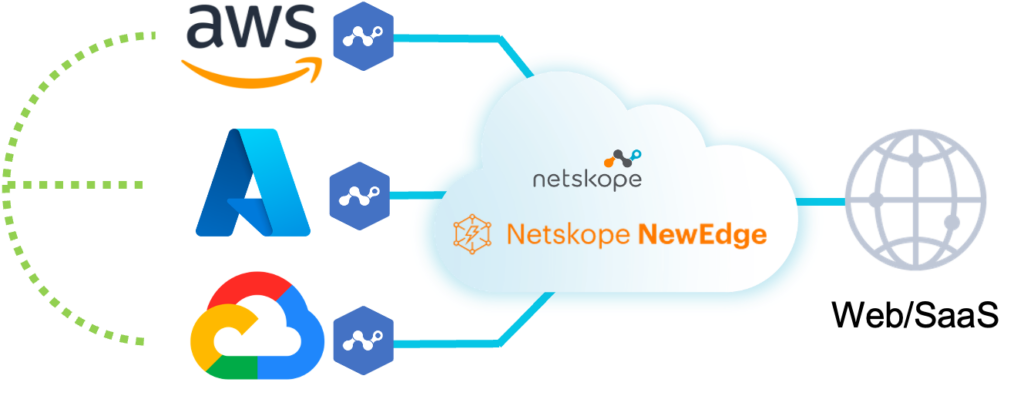Should we be using multiple public cloud providers? As organizations continue to migrate applications and workloads to public cloud platforms, they often face the tough decision of sticking with a single provider or embracing multiple clouds. Using multiple cloud providers promises a variety of benefits including the ability to minimize vendor lock-in, leverage best-of-breed services, achieve cost advantages, and comply with data sovereignty rules. According to Flexera, 87% of organizations have already adopted a multi-cloud strategy leveraging both public and private clouds, and 13% of organizations are actively using multiple public cloud providers.
Challenges with multi-cloud networking
As organizations increasingly embrace the cloud to drive innovation and agility, they are faced with the challenge of managing multiple cloud environments and ensuring seamless and secure connectivity between them. However, many of the benefits promised by using multiple clouds can’t be fully realized unless workloads and services that depend on each other can communicate reliably and efficiently.
This is especially true when considerations such as performance and security are top of mind, whether that’s with stock trading applications that need low latency access to data or disaster recovery programs that utilize cloud storage services in multiple locations. Some of the challenges associated with multi-cloud networking include:
- Limited interoperability: Managing connectivity, security, and performance across multiple cloud environments can get complex in a hurry. Each provider might have its own networking architecture, security protocols, management console, and unique terminology.
- Siloed monitoring and visibility: Different monitoring tools and metrics can make it difficult to establish a unified view of the entire network and aggregate consistent data required to troubleshoot network, security, and performance problems.
- Security and compliance gaps: Cloud providers often have different security controls, policies, and compliance benchmarks which can complicate efforts to ensure consistent security, access controls, and data protection. Preparing for an audit can be a major challenge.
- High latency and poor network performance: Minimizing latency can be challenging, especially between geographically dispersed clouds and regions. Organizations using multiple clouds need to quickly detect and mitigate issues such as unexpected bandwidth limitations and delays when transferring data between different cloud environments.
Most public cloud providers offer high performance connectivity services to connect a customer’s on-premises networks and resources to provider clouds (e.g. Amazon Web Services Direct Connect and Azure ExpressRoute), however these services are not typically interoperable and don’t address cloud-to-cloud connectivity needs. So when it comes to connecting multi-cloud applications and services across different cloud providers, customers must find their own solutions.
Some organizations task their cloud architects or operations engineers with configuring bespoke network connections between cloud providers, while some deploy narrow cloud network overlay solutions that often add additional layers of cost and complexity while failing to address end user connectivity and security.
The Solution: Netskope Multi-cloud Networking
Netskope is a proven leader in secure access service edge (SSE) with Netskope Intelligent SSE. Now, Netskope Borderless SD-WAN is integrated with Intelligent SSE, providing organizations with a true SASE solution that simplifies operations while preserving network performance.
Netskope Multi-cloud Networking leverages the power of Netskope SASE to provide organizations with enhanced visibility, control, security, performance optimization, and scalability for multi-cloud environments. Netskope Multi-cloud Networking connects your interdependent workloads and applications across major public cloud providers and dispersed geographic regions to improve application performance, worker productivity, and security.

Netskope Multi-cloud Networking provides numerous features and benefits that enable organizations to fully unlock the value of diverse multi-cloud architectures. These include:
Networking and security that are tightly integrated
- Connect cloud networks easily: Netskope multi-cloud networking can be deployed across major cloud providers including AWS, Microsoft Azure, and Google Cloud providing consistent traffic flow with policy-based, context aware steering from user to cloud and cloud to cloud.
- Automated cloud operations: Manage multi-cloud operations from a single console with visibility into cloud usage, network traffic, application usage, security risks, and events. Unmatched cloud insights accelerate MTTR to and across multi-cloud environments.
- Consistent traffic flow between clouds and users: Policy-based, context aware steering from user to cloud and cloud to cloud.
ML-based insights that drive faster problem resolution
- ML-based anomaly detection: Autonomous monitoring to collect cloud service level expectation (SLE) data, detect anomalies, and predict service level agreement (SLA) violations. Network-wide flow analytics enable rapid detection and resolution of policy violations.
- Enterprise-wide cloud Application Experience (AppX) monitoring: Provides a comprehensive view of cloud-to-cloud connectivity and quality across all regions, now and in the past. This feature makes it easier for IT to proactively spot problem areas and isolate issues.
- Best-in-class cloud analytics: Real-time link monitoring including loss, latency, jitter, bandwidth utilization, and AppX Score from every user and cloud to every destination.
Secure, optimized multi-cloud networking
- One-click security with Netskope Intelligent SSE: Connect your public clouds to access the world’s largest private security cloud network with a single click to ensure that cloud-to-internet traffic is inspected. Leverage integrated security services including Netskope protection for web traffic (NG-SWG), protection for SaaS apps and data stored in the cloud (CASB), cloud-based firewall service (FWaaS), secure access to apps and resources (ZTNA), data loss prevention (DLP), and more.
- Optimized cloud on-ramp: Optimized access to and across clouds with full context-aware quality of experience.
Summary
As businesses increasingly rely on cloud services to drive innovation and agility, they need a comprehensive solution that connects and secures clouds and hybrid workers across their IT environment. Netskope Multi-cloud Networking serves as a centralized control point that simplifies management of cloud-to-cloud connectivity. It enables creation of a unified network fabric that allows secure, optimized communication and data exchange between public clouds. Netskope abstracts away underlying complexities to provide network and cloud administrators with a unified view, making it easier to discover and remediate connectivity and security issues. With Netskope, organizations can confidently include the full benefits of a multi-cloud architecture in their IT modernization plans and achieve their digital transformation goals.
Learn more about Netskope Multi-Cloud Networking here: https://www.netskope.com/products/borderless-sd-wan/multi-cloud-networking
Learn about Netskope Public cloud Security here: https://www.netskope.com/products/public-cloud-security




 Back
Back 





















 ブログを読む
ブログを読む